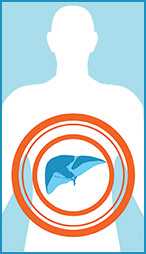Liver Cancer and Viral Hepatitis

The Annual Report to the Nation on the Status of Cancer, 1975–2012, is an update of rates for new cases and deaths for the most common cancers in the United States. Experts from the American Cancer Society, the Centers for Disease Control and Prevention, the National Cancer Institute, and the North American Association of Central Cancer Registries jointly issue the Annual Report to the Nation. This year’s report, released on March 9th, has a special feature that examines trends in liver cancer and highlights viral hepatitis B and viral hepatitis C as they are both primary causes of liver cancer.
In the United States, an estimated 3.5 million people are living with the hepatitis C virus; and approximately 850,000 people are living with the hepatitis B virus. Many people are unaware of their infection due to few noticeable symptoms. Hepatitis B and hepatitis C are serious illnesses that disproportionately affect some populations more than others and cause potentially devastating consequences, including liver failure and liver cancer, if left untreated.
Report Summary
Rates for New Cases and Deaths of Liver Cancer:
- In all populations, about twice as many men as women were diagnosed with liver cancer.
- Between 2008 and 2012, non-Hispanic black men had the highest overall rates of liver cancer.
- From 2008 to 2012, rates of liver cancer were highest among American Indians/Alaska Natives, followed by non-Hispanic Asian/Pacific Islanders and Hispanics.
- The number of deaths associated with liver cancer increased faster than for any other type of cancer.
Viral Hepatitis and Liver Cancer:
- In the United States, lifelong infections with hepatitis B and hepatitis C are shown to be major risk factors for liver cancer.
- Among Asian and Pacific Islanders, rates of the hepatitis B virus infection are higher among those persons not born in the United States.
- Hepatitis B testing followed by hepatitis B therapy is associated with a 50%–80% reduction in the risk of liver cancer.
- Individuals born during 1945-1965 are more likely than other birth cohorts to be diagnosed with hepatitis C infection.
- Among persons born during 1945-1965, rates of hepatitis C were highest among non-Hispanic whites, non-Hispanic blacks, and Hispanics.
- Cures of hepatitis C infection are associated with a 75% reduction in risk of liver cancer.
Populations at Increased Risk for Hepatitis B and Hepatitis C
Hepatitis B: Asian Americans and Pacific Islanders, and Africans
Hepatitis B disproportionately affects persons born in countries with intermediate to high (> 2%) incidence of hepatitis B virus infection; mostly in Asia and sub-Saharan Africa. Hepatitis B is very common in these areas, making it easy for people to come into contact with the virus. Many infections in these areas occur among children either during birth from an infected mother, or during childhood by coming into contact with infected blood or body fluids. Unsafe injections and non-sterile medical procedures may also contribute to hepatitis B transmission and the overall burden of hepatitis B.
Of newborns who acquired infection from their mothers at birth, as many as 90% develop a lifelong, chronic infection leading to liver cancer. Although newborns are the most vulnerable group, only 70 percent of them are vaccinated. CDC recommends that all newborns be vaccinated beginning at birth to prevent hepatitis B infection and recommends hepatitis B testing for persons born in sub-Saharan Africa, Asia, and in countries in other world regions where rates of hepatitis B infection is ≥2%. Rates of new hepatitis B infections had declined since the implementation of routine childhood vaccination, but increased for the first time in 2013 due to rising injection drug use among young adults.
Hepatitis C: Persons born during 1945-1965
While anyone can get hepatitis C, up to 75% of adults infected with the virus are baby boomers, born during 1945-1965 and 50% do not know they are infected. Most baby boomers were infected before the hepatitis C virus was discovered in 1989. CDC recommends a one-time blood test for everyone born during 1945-1965.
Hepatitis Prevention, Care and Treatment
Hepatitis B can be prevented with a vaccine. For persons currently infected, medications are available that can reduce their risk of liver cancer by 50%–80%. Unfortunately, it has been estimated that only 40% of infected persons are aware of their infection, only 50% of persons diagnosed are linked to appropriate care, and fewer than 15% of treatment eligible persons are prescribed antiviral medication.
There is currently no vaccine to prevent hepatitis C. Fortunately, new treatments are safe, with few side-effects are available that can cure over 85% of hepatitis C infected persons who complete therapy. Once diagnosed, most persons with hepatitis C can be cured in just 8 to 12 weeks, reducing liver cancer risk by 75%. Testing persons born during 1945-1965 and linking them to lifesaving care and treatment can prevent more than 320,000 deaths.
Learn more about Viral Hepatitis and Cancer
- Visit the CDC Cancer Prevention and Control website to learn more about some of the most common kinds of cancer in the United States.
- Visit the CDC Viral Hepatitis website to learn more about hepatitis B, hepatitis C, and other types of viral hepatitis.
- Page last reviewed: September 12, 2017
- Page last updated: September 12, 2017
- Content source:


 ShareCompartir
ShareCompartir